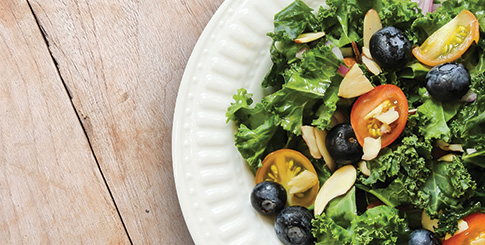“There is a danger of the term being used wrong,” Lucido agrees. “It’s a question of where to draw the line.” She notes that all vegetables and fruits have health benefits, but those particularly high in fiber or Vitamin C or other specific benefits are the ones that make sense for a superfoods positioning.
Grinstead comments, “I understand trying to ride trends and marketing waves, but do you end up conveying the message that other fruits and vegetables are not good for you?”
Lucido believes superfoods messaging actually drives more sales rather than cannibalizing them. “The more we can do to get people shopping in the produce aisle, the better,” she explains. “You may pick up kale, but you’re going to make a salad out of it”—which inspires gathering and purchasing other vegetables, fruits, herbs, etc.
“One of the best things a consumer can do is eat a wide variety of types and colors of fresh produce,” offers Caplan. “So the superfoods—which are typically intense in color—complement fruits and veggies.”
Another challenge facing fresh superfoods is competition from packaged foods and beverages, from large companies with substantial marketing budgets. With prominent signage and creative packaging, consumers may opt for these products and bypass the produce department. Market research firm Euromonitor International confirms there is growth in these “naturally healthy” products, including plant waters, juice blends, dried snacks, and baked goods infused with fruits. This is where cross-promotional partnerships can benefit both CPG [consumer packaged goods] companies and produce suppliers.
Researcher Mintel found that between 2011 and 2015, there was a 202 percent increase globally in the number of new food and drink products launched with the terms “superfood,” “superfruit,” or “supergrain” associated with them. This includes a 36 percent increase in “super” foods and beverages in just 2015 alone.
As with any major marketing trend, popularity will wax and wane. Last year’s top contender, cauliflower, is poised for a comeback and may knock kale from its perch. And there is a continuous flow of new up-and-comers such as turmeric and black garlic. But the idea that some foods can help prevent specific health issues is a long-term trend.
“Overall, making healthy choices and seeing consumers gravitate to the superfoods list will last,” insists Lucido. “It’s a shift in attitude.” Caplan concurs. “It’s definitely a long-term trend toward healthy eating and an interest in nutrition.”
Image: vm2002/Shutterstock.com



